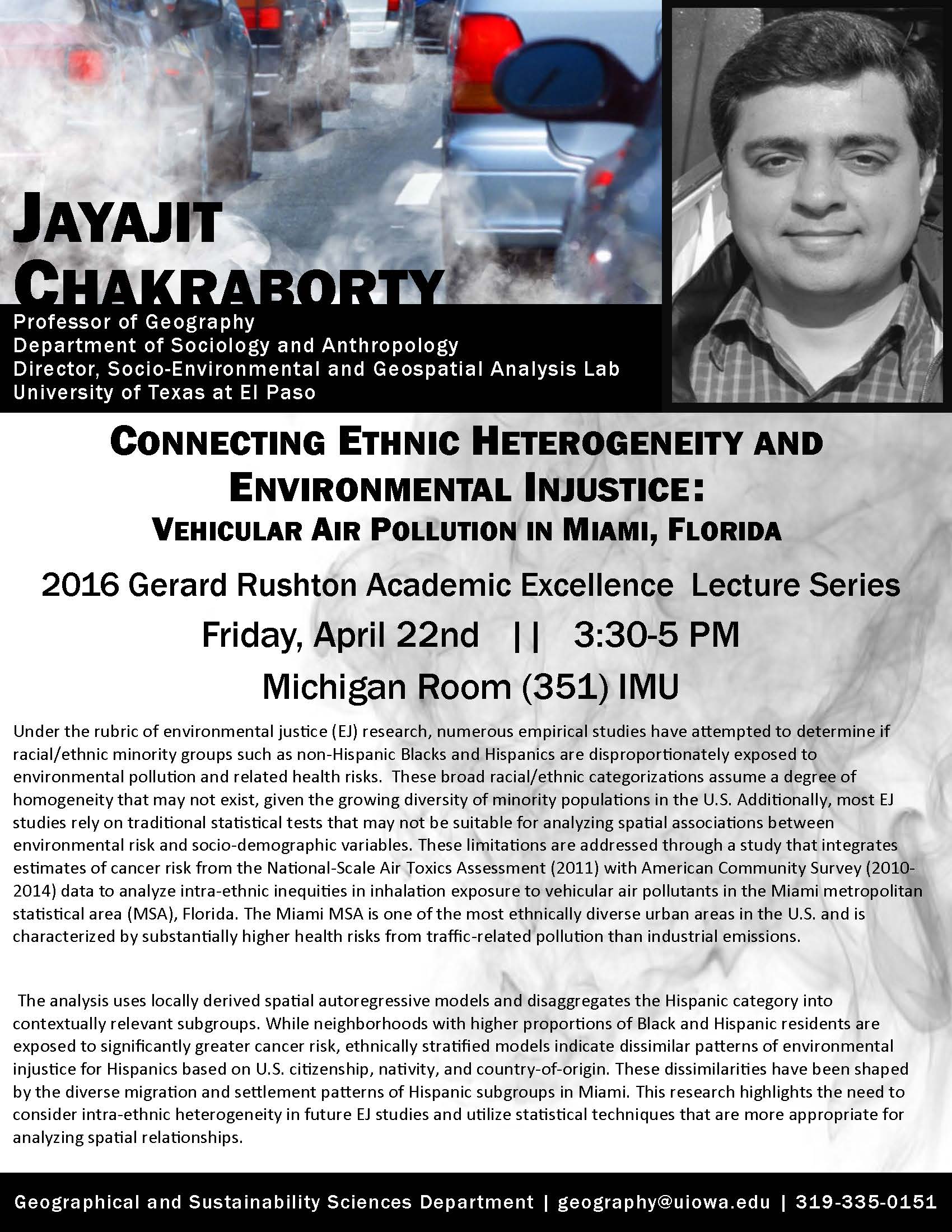College of Liberal Arts & Sciences
2016 Gerard Rushton Academic Excellence Lecture Series
Jayajit Chakraborty
Professor of Geography - University of Texas El Paso
CONNECTING ETHNIC HETEROGENEITY AND ENVIRONMENTAL INJUSTICE :
VEHICULAR AIR POLLUTION IN MIAMI, FLORIDA
2016 Gerard Rushton Academic Excellence Lecture Series
Friday, April 22nd || 3:30-5 PM
Michigan Room (351) IMU
Under the rubric of environmental justice (EJ) research, numerous empirical studies have attempted to determine if racial/ethnic minority groups such as non-Hispanic Blacks and Hispanics are disproportionately exposed to environmental pollution and related health risks. These broad racial/ethnic categorizations assume a degree of homogeneity that may not exist, given the growing diversity of minority populations in the U.S. Additionally, most EJ studies rely on traditional statistical tests that may not be suitable for analyzing spatial associations between environmental risk and socio-demographic variables. These limitations are addressed through a study that integrates estimates of cancer risk from the National-Scale Air Toxics Assessment (2011) with American Community Survey (2010-2014) data to analyze intra-ethnic inequities in inhalation exposure to vehicular air pollutants in the Miami metropolitan statistical area (MSA), Florida. The Miami MSA is one of the most ethnically diverse urban areas in the U.S. and is characterized by substantially higher health risks from traffic-related pollution than industrial emissions.
The analysis uses locally derived spatial autoregressive models and disaggregates the Hispanic category into contextually relevant subgroups. While neighborhoods with higher proportions of Black and Hispanic residents are exposed to significantly greater cancer risk, ethnically stratified models indicate dissimilar patterns of environmental injustice for Hispanics based on U.S. citizenship, nativity, and country-of-origin. These dissimilarities have been shaped by the diverse migration and settlement patterns of Hispanic subgroups in Miami. This research highlights the need to consider intra-ethnic heterogeneity in future EJ studies and utilize statistical techniques that are more appropriate for analyzing spatial relationships.
